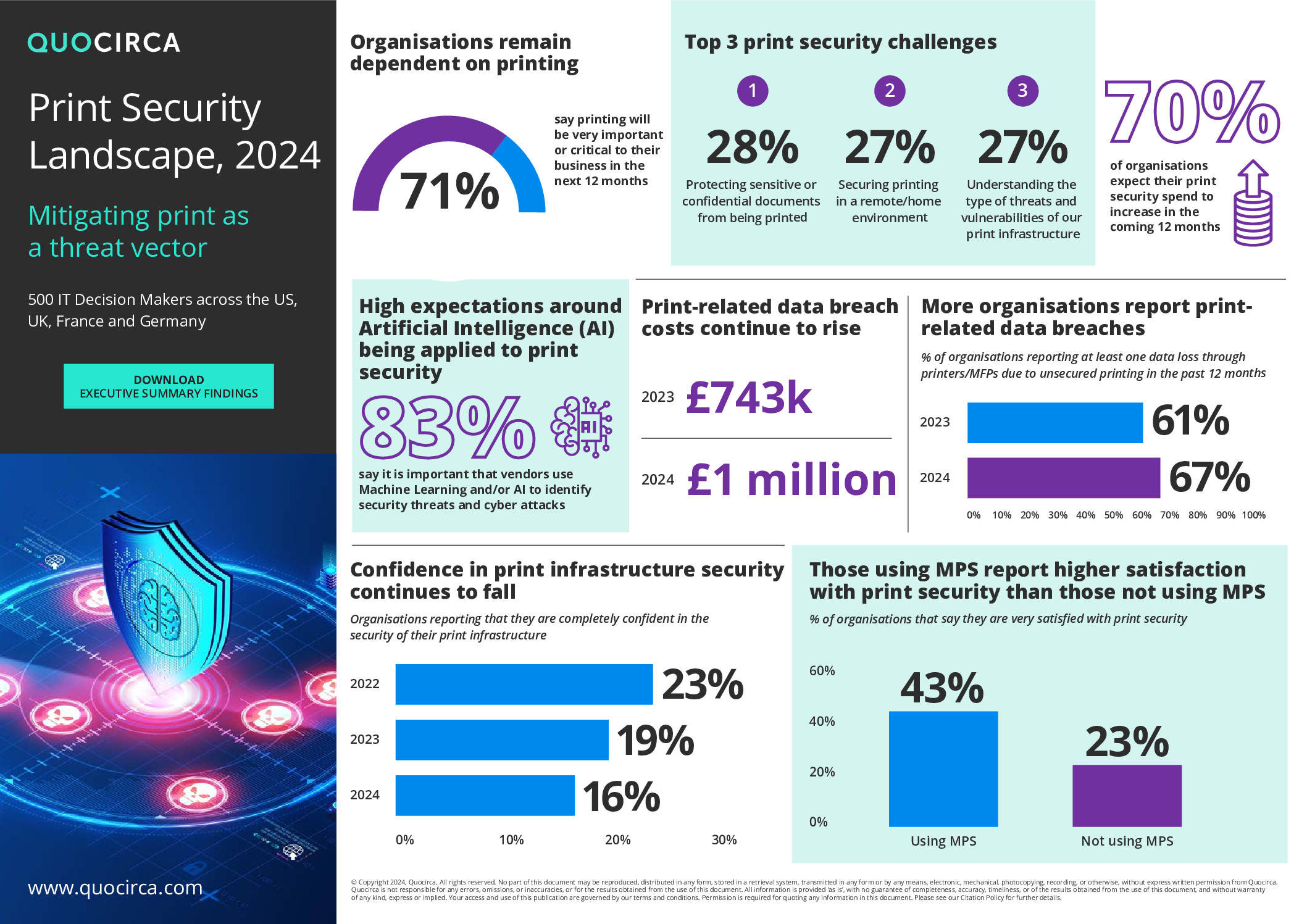

The Overlooked Risk: Print Devices in Cybersecurity
In today’s digital age, the focus on cybersecurity is more intense than ever. Businesses of all sizes are investing heavily in protecting their networks, securing data, and educating employees about potential threats. However, there is one critical area that often gets overlooked: Print Devices.
According to the 2024 Print Security Landscape report by Quocirca, print devices are becoming a significant vulnerability in the cybersecurity landscape. This oversight can have severe repercussions for businesses, including those within the Northamptonshire Chamber of Commerce.
The Hidden Threat
Print devices, such as printers, photocopiers, and multifunction devices (MFDs), are often not considered when companies assess their cybersecurity posture. Yet, these devices are essentially computers with their own hard drives, software, and network connectivity. This makes them susceptible to the same types of cyber threats as PCs and servers.
Quocirca’s report highlights some startling statistics:
- 68% of organisations have experienced data losses due to unsecure printing practices.
- 62% of IT decision-makers acknowledge that their print infrastructure is vulnerable to cyberattacks.
- 30% have suffered data breaches due to insecure print devices in the past year.
Why Print Devices are Vulnerable
Several factors contribute to the vulnerability of print devices:
- Network Connectivity: Modern print devices are connected to company networks, making them potential entry points for cybercriminals.
- Stored Data: These devices often store sensitive documents on their internal hard drives, which can be accessed if the device is compromised.
- Lack of Awareness: Many companies lack awareness of the security risks associated with print devices, leading to inadequate protection measures.
- Insufficient Updates: Firmware and software updates for print devices are often neglected, leaving them exposed to known vulnerabilities.
Syncro Steps to Secure Print Devices
Securing print devices should be an integral part of your overall cybersecurity strategy. Here are some steps recommended by cybersecurity experts and supported by the findings in Quocirca’s report:
- Regular Firmware Updates: Ensure that all print devices are updated with the latest firmware and security patches.
- Access Controls: Implement strict access controls to limit who can use and manage print devices.
- Secure Print Release: Use secure print release solutions that require authentication before documents are printed.
- Encryption: Encrypt data sent to and from print devices, as well as any stored data on the device’s hard drive.
- Monitoring and Auditing: Regularly monitor print device activity and conduct audits to identify and address any security issues promptly.
The Syncro Advantage
Having a print partner like Syncro Office Technology can significantly enhance your print security. Syncro provides:
- Manufacturer Trained Engineers: Expert technicians who are skilled in the latest security protocols and best practices.
- 5-Star Google Reviews for Customer Service: A proven track record of exceptional customer support and service.
- Dedicated Account Manager: Personalised guidance to help you implement and maintain best security practices for your print devices.
Conclusion
As members of the Milton Keynes Chamber of Commerce, it is crucial to recognise that cybersecurity extends beyond traditional IT infrastructure. Print devices are an often overlooked but significant part of the security equation. By addressing the vulnerabilities associated with these devices and partnering with experts like Syncro Office Technology, we can better protect our organisations from potential cyber threats.
Incorporating these practices will not only safeguard your sensitive data but also ensure compliance with industry regulations and build trust with your clients and partners. Let’s make 2024 the year we close this critical security gap and fortify our defenses against the evolving landscape of cyber threats.
Stay secure with Syncro Office Technology.









